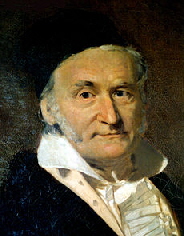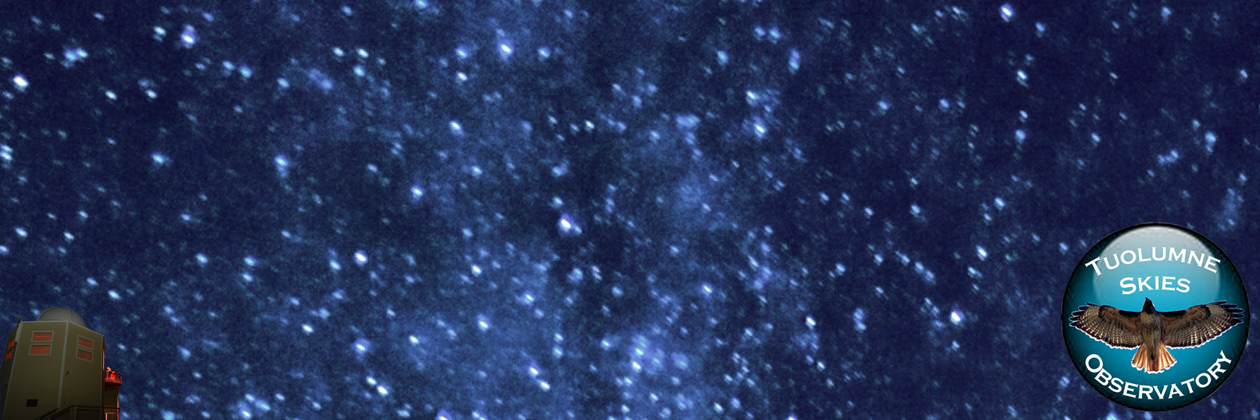Since Carl Frederick Gaus figured so prominantly in the methods for calculating the orbits of celestial bodies, let’s give some of the interesting history surrounding his “rediscovery” of the asteroid Ceres
History of Gauss and Ceres

Gauss and Ceres
On January 1, 1801, the Italian astronomer Joseph Piazzi discovered a planetoid, working from an observatory in Palermo, Italy. This object, which he christened Ceres, was moving in the constellation Taurus. Astronomers were only able to observe the planetoid for 41 days, during which its orbit swept out an angle of only 9 degrees (which would represent less than 3% of the total orbit). Ceres was then lost to sight when its light vanished in the rays of the sun, and the astronomers could no longer find it. There was now a challenge of calculating Ceres’ orbit using only the observations Piazzi made, so that astronomers would be able to sight Ceres when it reemerged.
While many astronomers attempted to predict the orbit, there were no reliable methods then developed for this problem. The reigning method for calculating orbits assumed that the orbit of a planet was circular, and that the orbit of a comet was parabolic; that is, in both cases the eccentricity of the orbit was taken as known. Laplace, among many others, thought the problem would be unsolvable because there were too few observations from which to deduce the orbit.
Gauss, who was 23 at the time, heard about the problem and tackled it. After three months of intense work, he predicted a position for Ceres in December 1801—just about a year after its first sighting—and this turned out to be accurate within a half-degree. In the process, he so streamlined the cumbersome mathematics of 18th century orbital prediction that his work remains a cornerstone of astronomical computation.
From the onset, Gauss decided to work out a more useful method for determining orbits. He differed from his contemporaries by avoiding any arbitrary assumption for the eccentricity of the initial orbit. His ellipse was based only on some of the available observations, without any additional hypotheses. The original computation was based largely on heuristic considerations. Gauss used methods similar to those used for the theory of the motion of the moon, especially the approximation of the elements of the orbit by finite parts of Taylor and trigonometric series. He also used the method of least squares to minimize the inevitable errors of observation.
Gauss first adopted Kepler’s hypothesis that the motion of a celestial object is determined solely by its orbit. No information is needed about the mass, velocity, or any other details of the object itself. Gauss adopted a secondary hypothesis also, which was also derived from Kepler. It basically states that the orbit of an object that does not pass extremely close to another body in the solar system has the form of a conic section with its focal point at the center of the sun. Under these conditions, the motion of the object is determined by a set of 5 parameters, or elements, which specify the form and position of the orbit in space. Once the elements of an orbit are specified, the motion of the object is determined, as long as it remains in that orbit (unperturbed by large planets such as Jupiter).
The elements of an orbit consist of the following: two parameters determining the position of the plane of the object’s orbit relative to the Earth’s orbit; the relative “tilt” of the main axis of the orbit; the relative scale of the orbit; and the eccentricity of the orbit or perihelial distance, the shortest distance from the orbit to the center of the sun. In addition to these 5 parameters, a single time when the object was, or will be, in a particular point in the orbit is needed, so that its location at a given time can be computed.
Gauss had a total of 22 observations made by Piazzi over 41 days. The data from these observations consisted of a specific moment in time together with 2 angles defining the direction in which the object had been seen relative to an astronomical system of reference defined by the sphere of fixed stars. In principle, each of these observations defined a line in space, starting from the location of Piazzi’s location at the moment of observation and directed along the direction defined by the 2 angles. Gauss had to make corrections for various effects such as the rotation of the Earth’s axis, the motion of the Earth’s orbit around the sun, and possible errors in Piazzi’s observations or in their transcription.
The technical execution of Gauss’s method is very involved, and required over 100 hours of calculation for him. His first tactic was to determine a rough approximation to the unknown orbit, and then refine it to a high degree of precision. Gauss initially used only 3 of Piazzi’s 22 observations, those from January 1, January 21, and February 11. The observations showed an apparent retrograde motion from January 1 to January 11, around which time Ceres reversed to a forward motion. Gauss chose one of the unknown distances, the one corresponding to the intermediate position of the 3 observations, as the target of his efforts. After obtaining that important value, he determined the distances of the first and third observations, and from those the corresponding spatial positions of Ceres. From the spatial positions Gauss calculated a first approximation of the elements of the orbit. Using this approximate orbital calculation, he could then revise the initial calculation of the distances to obtain a more precise orbit, and so on, until all the values in the calculation became coherent with each other and with the three selected observations. Subsequent refinements in his calculation adjusted the initial parameters to fit all of Piazzi’s observations more smoothly.
In September of 1801, Zach published several forecasts of the prospective orbit, his own and Gauss’s among them; Gauss’s prediction was quite different from the others and expanded the area of the sky to be searched. Using Gauss’s ephemeris for Ceres (astronomical almanac showing its predicted location at various times), astronomers found Ceres again between November 25 and December 31. Zach, on December 7, and then Olbers, on December 31, located Ceres very close to the positions predicted by Gauss.
Gauss published his methods in 1809 as “Theoria motus corporum coelestium in sectionibus conicus solem ambientium,” or, “Theory of the motion of heavenly bodies moving about the sun in conic sections.” the astronomical methods described in Theoria Motus Corporum Coelestium are still in use today, and only a few modifications have been necessary to adapt them for computers. Gauss’s determination of Ceres’s orbit made him famous in academic circles worldwide, and established his reputation in the scientific and mathematical communities.
Read about elements of orbits.
Back to the science.
Sources:
Leorah Weiss , Gauss and Ceres, taken from: http://www.math.rutgers.edu/~cherlin/History/Papers1999/weiss.html
Selections from: http://en.wikipedia.org/wiki/Carl_Friedrich_Gauss
Bruce Director and Jonathan Tennenbaum , How Gauss Determined the Orbit of Ceres (Printed in The American Almanac, December 15 and 22, 1997), found at http://american_almanac.tripod.com/ceres.htm
